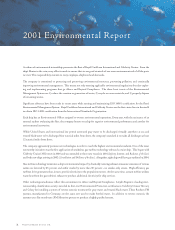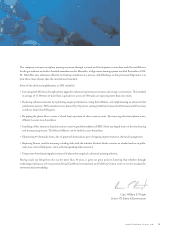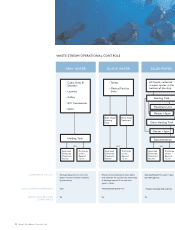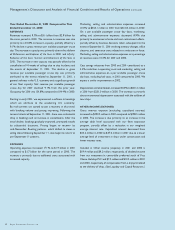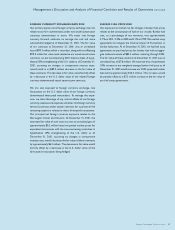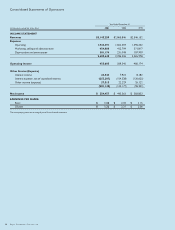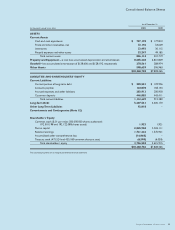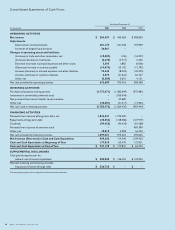Royal Caribbean Cruise Lines 2001 Annual Report Download - page 33
Download and view the complete annual report
Please find page 33 of the 2001 Royal Caribbean Cruise Lines annual report below. You can navigate through the pages in the report by either clicking on the pages listed below, or by using the keyword search tool below to find specific information within the annual report.
Management’s Discussion and Analysis of Financial Condition and Results of Operations (continued)
Royal Caribbean Cruises Ltd. 31
management to be commensurate with our business risk. The
estimation of fair value utilizing discounted forecasted cash
flows includes numerous uncertainties which require our
significant judgment when making assumptions of revenues,
operating costs, marketing, selling and administrative expenses,
interest rates, ship additions and retirements, cruise industry
competition and general economic and business conditions,
among other factors.
Upon adoption of Financial Accounting Standards No. 142,
“Goodwill and Other Intangible Assets” on January 1, 2002, we
ceased to amortize goodwill; goodwill amortization was
$10.4 million in 2001. In addition, we are required to perform
an initial impairment review of our goodwill upon adoption and
an annual impairment review thereafter. We currently do not
expect to record an impairment charge upon completion of
the initial impairment review.
If there is a material change in the assumptions used in our
determination of fair values or if there is a material change in
the conditions or circumstances influencing fair value, we could
be required to recognize a material impairment charge.
CONTINGENCIES – LITIGATION
On an ongoing basis, we assess the potential liabilities related
to any lawsuits or claims brought against us. While it is typically
very difficult to determine the timing and ultimate outcome of
such actions, we use our best judgment to determine if it is
probable that we will incur an expense related to the settlement
or final adjudication of such matters and whether a reasonable
estimation of such probable loss, if any, can be made. In assess-
ing probable losses, we make estimates of the amount of insur-
ance recoveries, if any. We accrue a liability when we believe a
loss is probable and the amount of loss can be reasonably esti-
mated. Due to the inherent uncertainties related to the even-
tual outcome of litigation and potential insurance recovery, it
is possible that certain matters may be resolved for amounts
materially different from any provisions or disclosures that we
have previously made.
PROPOSED STATEMENT OF POSITION
On June 29, 2001, the Accounting Standards Executive
Committee of the American Institute of Certified Public
Accountants issued a proposed Statement of Position,
“Accounting for Certain Costs and Activities Related to
Property, Plant and Equipment.” Under the proposed
Statement of Position, we would be required to adopt a
component method of accounting for our ships. Using this
method, each component of a ship would be identified as an
asset and depreciated over its own separate expected useful
life. In addition, we would have to expense drydocking costs as
incurred which differs from our current policy of accruing
future drydocking costs evenly over the period to the next
scheduled drydocking. Lastly, liquidated damages received
from shipyards as mitigation of consequential economic costs
incurred as a result of the late delivery of a new vessel would
have to be recorded as a reduction of the ship’s cost basis
versus our current treatment of recording liquidated damages
as nonoperating income. If adopted, the proposed Statement
of Position would be effective for us beginning on January 1,
2003. We have not yet analyzed the impact that this proposed
Statement of Position would have on our results of operation
or financial position, as we are uncertain whether, or in what
form, it will be adopted.
Results of Operations
The following table presents operating data as a percentage of
revenues. As a result of the events of September 11, 2001,
ships out of service and certain other items, not all operating
margins are comparative year over year.
Year Ended December 31,
2001 2000 1999
Revenues 100.0% 100.0% 100.0%
Expenses:
Operating 61.5 57.7 58.8
Marketing, selling
and administrative 14.4 14.4 14.6
Depreciation
and amortization 9.6 8.0 7.8
Operating Income 14.5 19.9 18.8
Other Income (Expense) (6.4) (4.4) (3.8)
Net Income 8.1% 15.5% 15.0%



